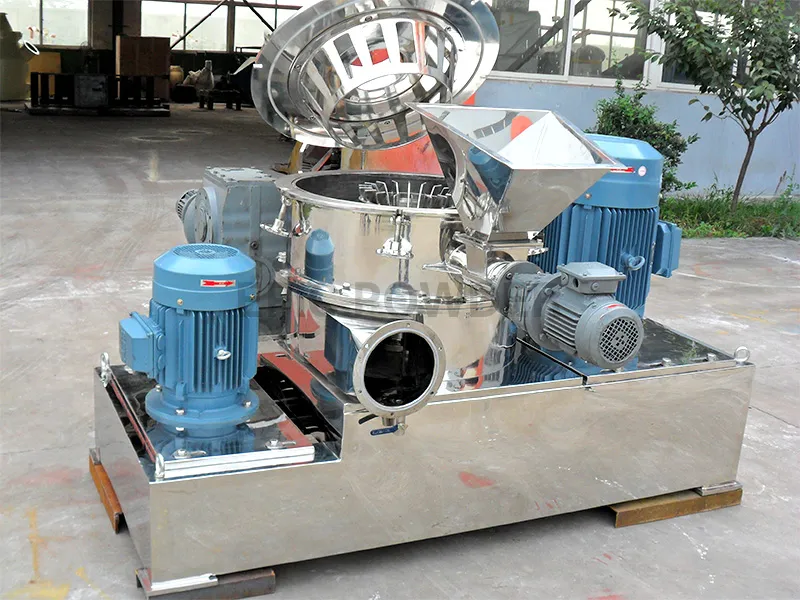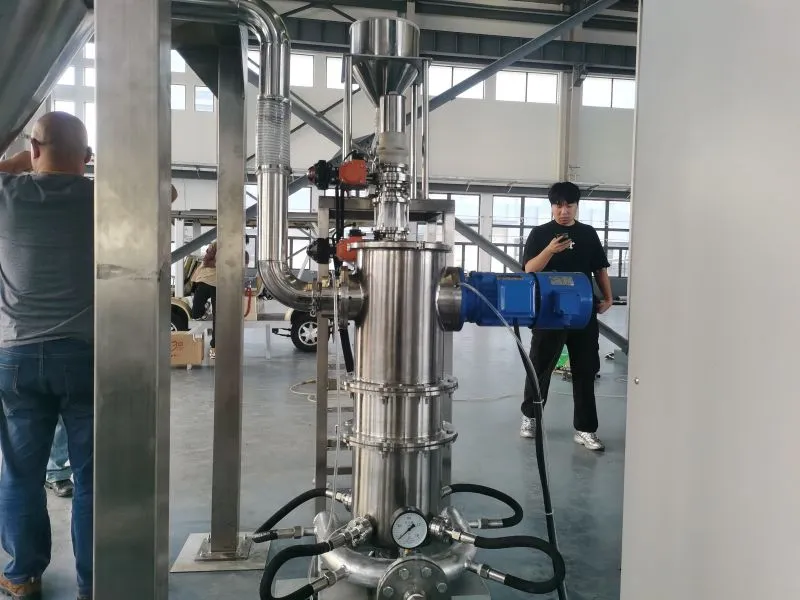Ultrafine grinding technology is a new technology developed in the past 20 years. Ultrafine grinding involves using force to crush solids. It does this by overcoming their internal cohesion. It crushes particles from above 3 mm to 10-25 microns. It was developed in the 1970s to adapt to modern times. A high-tech material processing technology developed through high-tech advancements. Ultrafine powder is the end product of ultrafine grinding. It has special physical and chemical properties. Ordinary particles lack these, such as good solubility, dispersion, adsorption, and reactivity. So, ultrafine powder is widely used in many fields. These include food, chemicals, medicine, cosmetics, pesticides, dyes, coatings, electronics, and aerospace.

Technical features
Ultrafine crushing uses fast speed and low-temperature methods. It uses supersonic airflow crushing, cold slurry crushing, and other methods. This is completely different from the old purely mechanical crushing methods. During crushing, there will be no local overheating. It can even be done at low temperatures. The speed is fast and can be completed in an instant. So, the powder retains the bioactive components. This helps make high-quality products. .
The particles are small and evenly spread. This results from using supersonic airflow pulverization. It evenly applies force to the raw materials. The grading system’s setting has two effects. It limits large particles and avoids over-crushing. This gets ultra-fine powder with the same-sized particles. At the same time, it greatly increases the powder’s surface area. This leads to a rise in adsorption and solubility. .
After the object is pulverized, the resulting powder has a nearly nanometer particle size. Ultrafine powder can be directly used in production. But, conventionally pulverized products still need some steps to be used and produced. , which is likely to cause waste of raw materials. This technology is thus good for crushing precious, rare raw materials.
Ultra-fine grinding is done in a closed system. This stops fine powder from dirtying the environment. It also keeps dust in the air from dirtying products. So, using this technology, food and health products can control microbes and dust well.
Crushing method
Mechanical ultra-fine grinding: This section covers mechanical ultra-fine grinding. A food grinding machine is a device used to crush or grind food. It usually includes a rotating blade or grinding disc. These pulverize food through high-speed rotation. They do this to achieve the needed particle size and shape. Crushers are widely used in the food processing industry. They are used in flour, condiment, food additive, and other processing fields. This can greatly improve production efficiency. It reduces manual work and ensures food safety, hygiene, and quality.

Airflow ultrafine grinding: Jet mill can be used for ultrafine grinding. It uses compressed air or superheated steam. They generate supersonic turbulent airflow through the nozzle. The airflow carries the particles. The impact backlog occurs between particles or between particles and fixed plates. Friction and shearing are necessary to achieve the purpose of crushing. Now, there are six types of stainless steel airflow crushers. They are: a disc, circulating tube, target, collision, rotating impact, and fluidized bed. Stainless steel air flow pulvers can grind products very finely. They can do this more finely than regular steel pulvers. They can reach a powder fineness of 2 to 40 microns. They also have a wider and more uniform particle size range. The gas expands at the nozzle to cool down. So, no heat is made by the crushing. Thus, the temperature rise during crushing is very low. This feature is vital for grinding very fine materials. They are low melting point and heat-sensitive. However, crushing consumes a lot of airflow and energy. The energy utilization rate is only about 2%, which is much higher than other crushing methods.

Other influencing factors
People generally believe that product particle size grows with feeding speed. This is worth noting. That is, the faster the feeding, the larger the particles. This understanding is not comprehensive. This is true for the crusher’s feeding speed or particle concentration. It is true when they reach a certain value. The feeding speed increases. This raises the particle concentration in the stainless steel crusher. Crowding occurs, and particles even flow like a plunger. Only the front particles of the plunger can effectively collide. Particles only have low-speed collisions, friction, and heat generation with each other. However, this does not mean that lower particle concentrations make smaller product particles. It also does not mean that it makes higher crushing efficiency. No, when the particle concentration is low to a point, there will be few collisions. This lack of collisions reduces the crushing efficiency.
